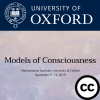Diana Stanciu - An ESR model of consciousness
Diana Stanciu
University of Bucharest; Berlin-Brandenburg Academy of Sciences and Humanities (BBAW)
I will argue that epistemic structural realism (ESR) can offer a feasible theoretical framework for the study of consciousness and its associated neurophysiological phenomena. While structural realism has already been employed in physics or biology (cf. Tegmark 2007, Leng 2010, Ainsworth 2010, 2011, McArthur 2011, Pincock 2011, Woodin 2011, Landry and Rickels 2012, Bain 2013, Andreas and Zenker 2014, Schurz 2014), its application to the study of consciousness is new indeed. Out of its two variants: ontic structural realism (OSR) and ESR, I consider the latter more suitable when studying the neurophysiological bases of consciousness since the OSR drastically claims that ‘there are’ actually no ‘objects’ and that ‘structure’ is all ‘there is’, while the ESR more moderately states that all we can ‘know’ is the ‘structure of the relations between objects’ and not the objects themselves (cf. Van Fraassen 2006). Thus, while not denying the existence of ‘objects’ (even if they are hard to pinpoint when discussing the neurophysiological bases of consciousness), the ESR still emphasises ‘relations’ vs. ‘objects’ and the retention of structure across theory change. In other words, it emphasies the continuity across theory change through the structural or mathematical aspects of our theories (cf. Stanford 2006).
Filmed at the Models of Consciousness conference, University of Oxford, September 2019.




